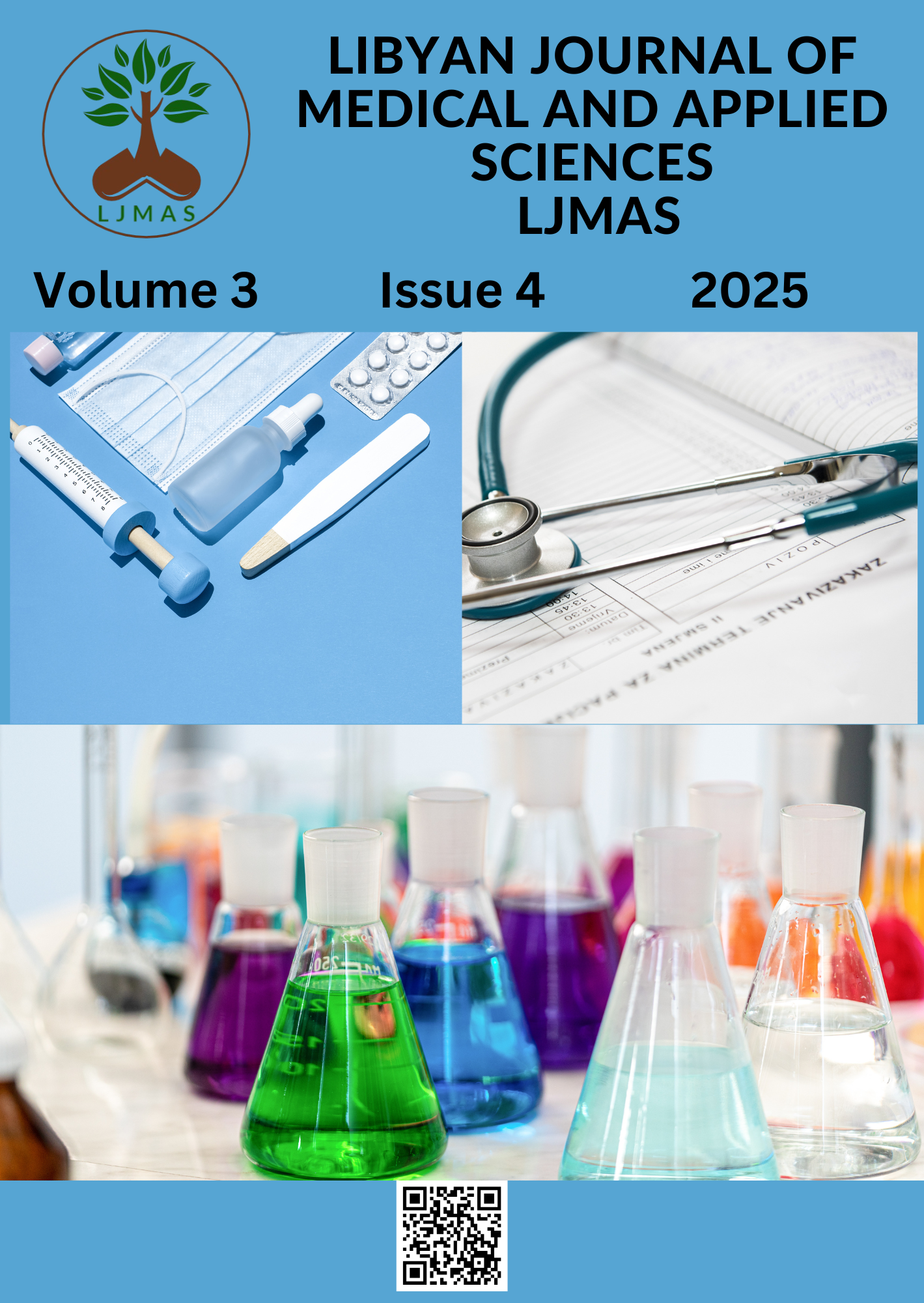Effect of Light Exposure Duration (8 vs. 16 h) on Anthocyanin Accumulation in Dried Hibiscus sabdariffa L. Flowers
DOI:
https://doi.org/10.64943/ljmas.v3i4.197الكلمات المفتاحية:
Anthocyanin، Light، Dried Hibiscus Flowers (Hibiscus Sabdariffa L)الملخص
The study aimed to evaluate the effect of exposure to different light periods (8 h vs. 16 h) on the accumulation of anthocyanin in dried (Hibiscus sabdariffa L) flowers during storage, as anthocyanin is an important compound for the nutritional value and color of hibiscus, and is used as a natural antioxidant in the food and pharmaceutical industries. The experiment was conducted using 24 dry flowers, which were randomly divided into two groups with four replicate per group, three flowers per replicate. The first group was exposed to a long lighting period (16 h) and the second group was exposed to a lighting period (8 h) daily using 30W fluorescent lamps for 7-15 days. Anthocyanin was extracted using water acidified with 1% citric acid. Anthocyanin accumulation was determined using the pH differential method using a spectrophotometer at 510-700 nm. The results revealed that long lighting (16 h) increased anthocyanin by 54% compared to 8 h of lighting. This is attributed to the increased activity of anthocyanin biosynthesis enzymes under long lighting, which leads to increased accumulation of anthocyanin in hibiscus. Indicates the importance of using long lighting during the preservation and storage of hibiscus, which contributes to improving the quality of dried hibiscus as important food product in local production.










